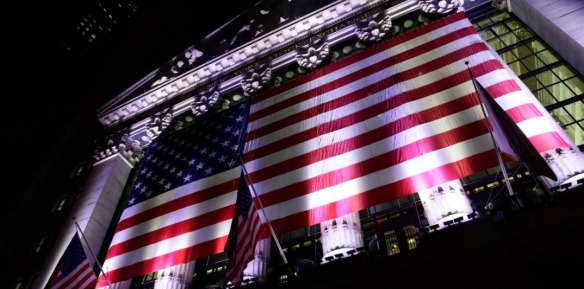
How concerned should we be about America’s $28 trillion debt?
America has a problem. Well, almost 28,000,000,000,000 problems.
The national debt has ballooned to an astounding 27.9 trillion dollars. To put in perspective of just how much money that is, consider this.
If you were to stack $100 bills on top of each other, one million dollars would be around the three feet mark – about the height of a chair or a toddler.
And if you keep stacking the $100 bills, eventually past the peak of the world’s tallest building, going a little over half-a-mile into the air, this would be one billion dollars.
But we’re going for a trillion.
This would have you stacking $100 bills into the stratosphere and past the International Space Station. You would have to stack these bills 631 miles above Earth’s crust. That would equal one trillion dollars. Now imagine 28 stacks of 631 mile-high $100 bills.
That’s America’s debt.
Now that we have an understanding of this colossal debt, you may be asking yourself: How worried should I be about it?
To answer that question and more, we went to Dr. Brandon Bolen, an Assistant Professor of Economics at Mississippi College.
The national debt, Bolen says, is a serious problem that the coronavirus has only inflamed due to the trillions of dollars the country has spent in relief packages. This on top of the mounting expense of Social Security benefits, which is only expected to increase the debt over time, has lead America, Bolen says, on a trajectory that many economists consider “unsustainable.”
But when it comes to the question of who holds America’s debt, most people think the answer is China. While this is technically true, China only holds a small percentage of it. Just a little over 1 trillion.
You may be surprised to learn that there are many foreign holders of U.S. public debt, including Japan, who holds the most (1.26 trillion), the United Kingdom, Ireland and even Switzerland. Altogether, these countries have taken on about 7 trillion of America’s debt (or almost 25 percent).
So now you may be wondering, Who holds the rest? In a nutshell, the answer is … us.
“A big part of our debt that most people don’t know about is what we call intragovernmental debt where the Social Security trust fund brings in more money than they spend and so they actually loan money to the general fund of the [United States] Treasury,” Bolen explains. “So it’s actually us borrowing money out of another federal agency’s budget… That’s about $6 trillion in debt that we just owe to other federal agencies within our government.”
According to The Balance, the public holds over $21 trillion of the national debt, with the Federal Reserve and the U.S. government holding around $10.16 trillion and mutual funds holding around $2.5 trillion.
The rest of the debt is taken up by state and local governments, private pension funds, insurance companies and banks.
And, as previously mentioned, the coronavirus has infected the debt and caused it to swell with a 1.9 trillion COVID bill moving to the Senate. Where does this money come from? It’s actually borrowed.
“The United States government borrows money by selling what we call treasury bonds or treasury bills to private investors or to foreign governments or to banks or to state pension plans,” Bolen says. “Whoever is willing to buy it, they sell these— essentially they’re IOUs.”
These IOUs are then used to raise money to pay for things to provide to Americans, such as a COVID relief package.
Although America has not yet faced an existential crisis because of this debt, Bolen says that there have been repercussions, one being that almost 10 percent of the federal budget every year immediately vanishes in order to pay interest on our debt.
Another is because the government is borrowing so much money, this then leaves less money to be borrowed by private investors – an effect referred to as crowding out.
“Basically when the United States government, or any government, is borrowing money out of savers’ hands, that leaves less money for private individuals to borrow and invest,” he explains. “That can harm long-term economic growth. It’s not very visible, but it can be something that makes our economy grow slower over a long period of time.”
As for when or even if America could ever be faced with the big one, a cataclysmic financial event that would leave the country reeling, Bolen says the answer to that is somewhat complex.
Right now, says Bolen, savers worldwide believe the U.S. government to be a safe place to lend their money. The government also borrows cheaply and the interest rates are low.
However, this could change if one day savers started to become less confident and more wary of loaning their money to us. This would then cause the government to have to pay more in interest to be able to borrow money which would only increase our national debt.
“At that point, people start losing confidence and increasingly lose confidence. That’s what people call a debt spiral where your debt just spirals out of control,” Bolen says. “And we don’t know if and when that would happen. That’s a possibility, but that’s really something that’s hard to predict…”
